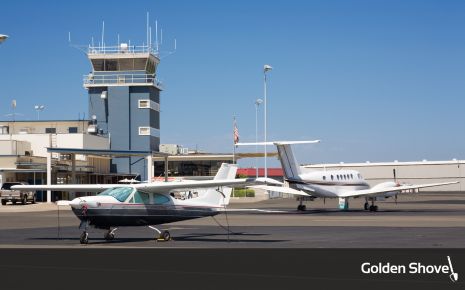Strategies to Preserve Your Local Airport in a Changing Economy

22 Jul 2024
News, Aerospace & Aviation
General aviation airports contribute significantly to the economy. Airports don’t need to be large or serve major airlines to make an impact. In a report titled “Nebraska Aviation Counts!” there is a breakdown of the impact rural airports make. In South Sioux City, Martin Field, for example, has a $1.9 million economic impact on the local economy and is responsible for 30 jobs. With a 3,323-foot runway, Martin Field cannot support a 747, but it doesn’t need to. The role it plays in the local community is important as-is.
For economic developers, the challenge is learning how to maximize the potential of local airports so they can be preserved for future generations. Golden Shovel’s whitepaper, “From Runways to Revenue: Economic Benefits of Your Local Airport,” explores how to do so.
Aviation Talent: Be Aware of the Shortfall & Work to Address It
Like many industries, aviation is experiencing a lack of skilled workers. This is expected to worsen as people retire. By 2027 — projected to be the worst year for the shortage — the bleakest scenario has the supply deficit at more than 48,000 aircraft maintenance workers or a shortfall of about 27%. Our more likely scenario predicts a gap of almost 43,000, or more than 24%.
Oliver Wyman forecasts a gap in North America between the supply of mechanics and demand for them of 8% to 12% in 2023, potentially growing to a deficit of over 48,000 by 2027. This shortfall is based on survey responses from airlines and MRO companies, demographic data, and fleet growth projections.
To preserve local airports, community leaders must work with education providers to identify ways to train aviation talent at the high school level. Examples of communities effectively engaging young people include DesMoines, Iowa, where the Aviation Technology Academy is training students for careers in airline maintenance, airframe/power plant mechanics, fixed base operators (military or corporate operations), and piloting. The Aviation Technology Academy is the only FAA Certified program at the high school level in Iowa, as well as the only high school program of its type in the entire Midwest. In Maryland, an aviation program was built from a curriculum created by the Aircraft Owners and Pilot Association and anchored at Williamsport High School. There, they combine hands-on learning with career and technical training. In New York, Aviation Career & Technical Education High School is a public high school owned and operated by the New York City Department of Education.
Longterm Planning is Key to Saving Local Airports
Local airports, whether publicly or privately owned, require ongoing management and long-term planning. Without it, airports can fall into disrepair and lose customers, just like any business. Economic developers should work with airport management and community leaders to:
- Establish Partnerships: Form alliances with local businesses, educational institutions, and aviation organizations. Partnerships can strengthen the airport's position and leverage resources.
- Diversify Revenue Streams: Explore opportunities to generate revenue beyond traditional aviation activities, such as leasing airport property for commercial use or hosting events.
- Attract New Business: Find ways to create economic opportunity at the local airport through the attraction of complementary businesses, such as medical providers. Download “From Runways to Revenue: Economic Benefits of Your Local Airport” for an example.
Engage the Community in Preserving Your Local Airport
Very often, people don’t realize what they have until it’s gone. Create awareness within the community about the benefits of having a local airport, invite people to events and tours, and engage them in activities that make the airport viable long-term.
- Engage the Community: Mobilize local residents, businesses, and stakeholders to advocate for the airport's importance. This can include attending town hall meetings, writing letters to elected officials, and creating awareness campaigns.
- Promote the Economic Benefits: Highlight the economic contributions of the airport to the community, including job creation, tourism revenue, and local business support. If you are unsure of the economic impact, reach out to the state EDO office. They may have completed a report you can use.
Secure Funding for Your Local Airport
Investment will be required to respond to changes in market conditions and regulatory changes. Fortunately, there are funding mechanisms at the federal level that can help. Read “From Runways to Revenue: Economic Benefits of Your Local Airport” to explore them.
Take Steps to Preserve Your Local Airport
By combining these strategies with local initiatives and community involvement, it's possible to create a sustainable future for a local airport. Download “From Runways to Revenue: Economic Benefits of Your Local Airport” for specific tips and strategies.
More Topics





